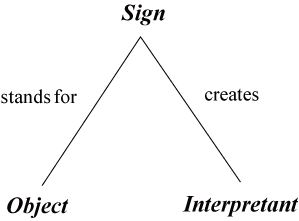
The focus of research on a future mechanical system needs to be changed from the machine itself as an entity that is highly accurate and highly efficient to a whole integrated system, which involves the environment that surrounds the machine and a human who operates it. In general, there are limited numbers of systems in which entire functions are accomplished by machines alone. In most cases, the interactions between human and the external environment accomplish the original functional purposes of mechanical systems. Wherein, mechanical systems with numerous components and subsystems interact with each other in multiple and intricate ways. We need to establish a universal principle for a design/redesign of such large-scale systems consisting of not only purely mechanical systems, but also of biological, social, and organizational systems, all of that are likely dynamic and adaptive in nature.
When we deal with complex human-in-the-loop systems, the conventional division between human beings and machines should be modified in the context of thinking about evolutionary engineering processes. That is, human beings and the technology (computers, communication devices, electronic networks, etc.) should all be understood to be part of the system, and changes in the individual parts take place through introducing alternate components, and all of these changes are part of the dynamics of the system. Therefore, engineering efforts should be on change to the system as a whole, rather than just on change to the small parts.
Essentially, autonomous and proactive processes, typically seen in living systems, are not steered only by external forces. Instead, they can autonomously change the relationships among the internal elements that constitute themselves, while taking in external disturbances and adapting themselves to them. To many of the biological beings, complexities of the environments they encounter are quite varied depending upon what embodied interactions are allowed and upon the quality of coordination they need for their survival. For instance, the significance environment to insects are quite simple as compared to human, since it is genetically determined what external stimuli to perceive and how to react to that. On the other hand, more social primate beings have to recognize the other’s intentions reflected within the environment in order to make efficient cooperation with their partners; they learn a variety of powerful social rules which minimize interference and maximize their benefit. In a word, the characteristics of human-in-the-loop systems are as follows:
- To use the natural dynamics that each of the system components originally has to create structures and functions.
- To clarify how the component recognizes the environment and how the context determines the behaviors of the component.
The above characteristics denote that we have to introduce the “meaning” in an engineering design. Engineers who want to make semantic machines are commonly faced with the task of defining meaning, which at present exists only in brains, and then with the task of learning how to make or cause meaning in machines. Herein, we introduce an idea of semiosis as a common and core process of generating the meaning.
Peirce formulated his semiology from a more general definition of semiosis, which introduces the interaction of three abstract subjects: the sign, its object and its interpreter as shown in Fig.1. His theory is moreover not limited to intentionally transmitted and artificial signs, but covers all phenomena that eventually can be perceived by our senses and interpreted by our mind. The core of the semiosis is the problem of the relationships between meanings and representations: A representation, as a material object or process, has no meaning in itself, but is mostly signified through usage in practice having a variety of interactions with the external.

Fig.1 Triadic relation of a sign
Therefore, the design of the mutual and inseparable relationships between the external environment and the internal of the cognitive agent that is an actor, an observer, a cognizer, and an interpreter is becoming fundamental in semiosis. The terminology of Peirce is quoted as follows:
"A sign, or representamen, is something which stands to somebody for something in some respect or capacity. It addresses somebody, that is, creates in the mind of that person an equivalent sign, or perhaps a more developed sign. That sign which it creates I call the interpretant of the first sign. The sign stands for something, its object [or referent]. It stands for that object, not in all respects, but in reference to a sort of idea, which I have sometimes called the ground of the representamen." (Peirce, 1931-1958, 2, 228 [1]).
In this research project, by mingling technologies with this semiotics, we jointly approach to the common design issues varying from how organisms make predictions about, and adapt to, their semiotic niche in the world, and to an aspect of the wider systems including architects, embodied robots, product innovation and human-machine and/or human social interactions. Semiotic technology offers us an indispensable tool for the creation of a truly sustainable society and human-oriented technology.
This project is fully supported by a Grant-in-Aid Creative Scientific Research 2007-2011 (19GS0208) funded by the Ministry of Education, Culture, Sports, Science and Technology. Principal Investigator is Tetsuo Sawaragi (Kyoto University) and 12 researchers are participating in this project from Kyoto University, Doshisha University and Ritsumeikan University (the project originally started with 9 researchers in 2007).

